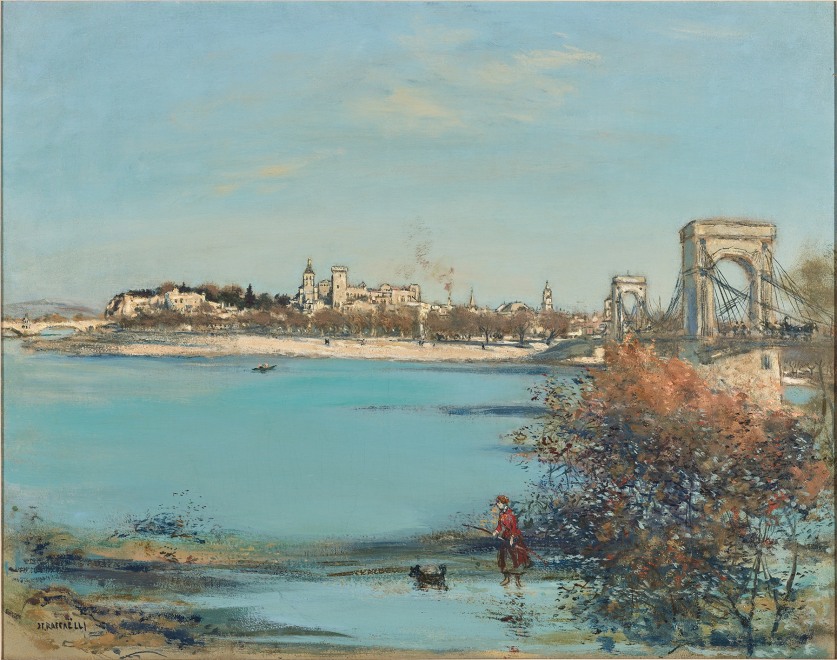Provenance
Artist
Thence by descent to his daughter Germaine Chevrier de Beauchesne
Sale: Hôtel Drouot, Paris, 4 June 1943, lot 38
R. Lecort, Paris
Sale: Sotheby’s, London, 4 December 1975, lot 332
Exhibited
Possibly, Paris, Société Nationale des Beaux-Arts, 1924, no 1025
Possibly, London, The Leicester Galleries, Exhibition of paintings and etchings by J.-F. Raffaëlli, January 1929, no 55
Paris, Galerie Simonson, Œuvres de J.-F Raffaëlli, 5 -20 November 1929, no. 32
Paris, Galerie Tedesco frères, Œuvres de J. F. Raffaëlli, 2 - 18 mars 1939, no.16
Paris, Galerie Charpentier, Paysages d’eau douce, 1945, no. 111
Toronto, Mackenzie Galleries
Catalogue note
While much of Raffaëlli’s subject matter was drawn from the inhabitants of the Paris suburbs – the rag pickers, beggars, garlic sellers and chimney sweepers – he also drew inspiration from many locales throughout France, as well as Italy, Spain, Africa and America. He was a keen observer of not only people, but also of the everchanging and evolving cityscape. Our painting is a view of the Rhône at Avignon showing the skyline of the Palais des Papes. Raffaëlli has connected the city between the famous 12th century Saint-Bénézet Bridge, the subject of the well-known French nursery rhyme and song “Sur le Pont d’Avignon” and the 19th century suspension bridge, thereby providing a “snapshot” of the city that no longer exists as the modern bridge was demolished in the 20th century. His painting is made even more interesting by the inclusion of a large tree in the lower right of the composition, its branches covered with a frenzied overlapping of rust-hued leaves, which contrast with and accentuate the smooth handling of the paint surface of the river.




